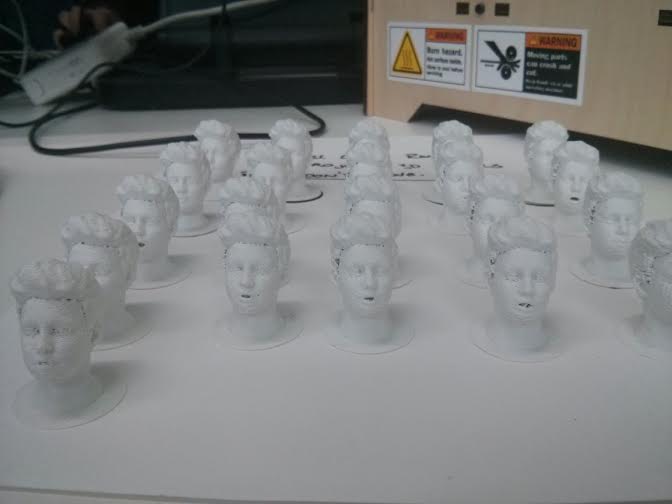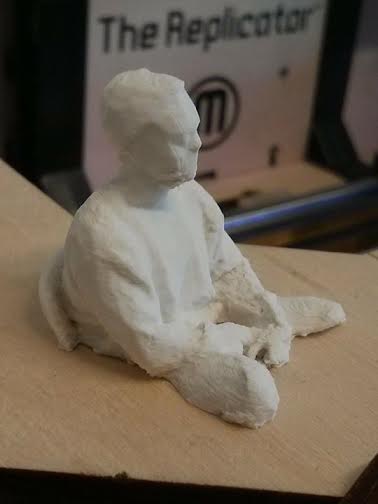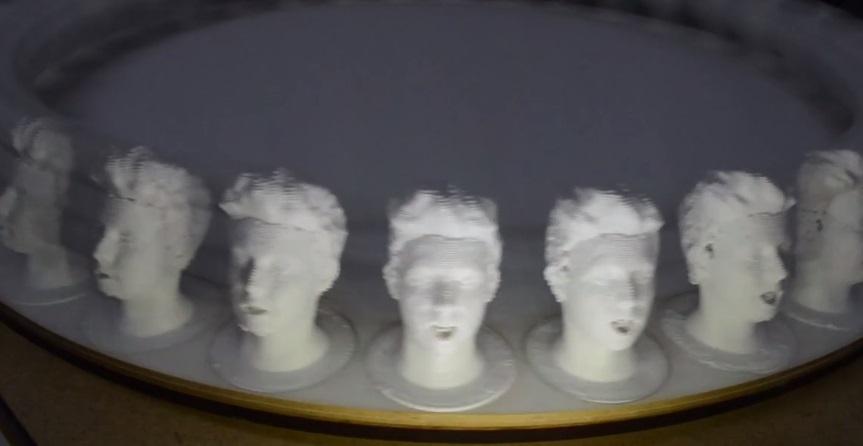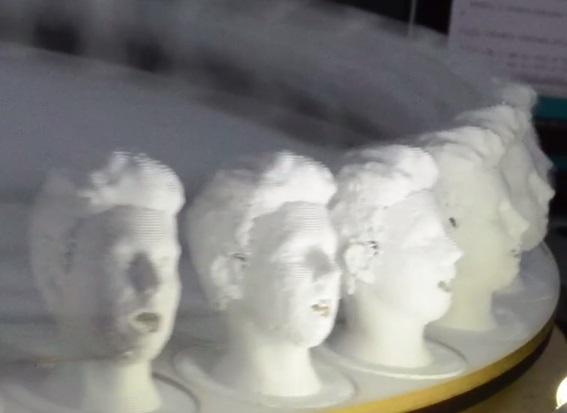 We have really begun to see a convergence of 3D printing with many different aspects of art, film making, and design in the past couple of years. 3D printing allows for the creation of completely custom props, models, and other useful objects that can be used in film production and art exhibits. We have previously seen 3D printing used in the creation of zoetropes. In fact, just a few day ago, we reported on a recent Northumbria University graduate who had created a unique zoetrope of a running lion.
We have really begun to see a convergence of 3D printing with many different aspects of art, film making, and design in the past couple of years. 3D printing allows for the creation of completely custom props, models, and other useful objects that can be used in film production and art exhibits. We have previously seen 3D printing used in the creation of zoetropes. In fact, just a few day ago, we reported on a recent Northumbria University graduate who had created a unique zoetrope of a running lion.
Now comes news of another Northumbria University student who is using 3D printing for the creation of unique cinema. Michael Lainé, an animation master’s student, who earned his bachelor’s degree in animation and motion graphics, has used this up-and-coming technology to create two types of cinema.
Using a Makerbot Replicator 2 3D printer, which the university had at its disposal, along with a Microsoft Kinect scanner, Lainé was able to capture himself in three dimensions and then use those captures for the creation and further development of a project he calls “Silvia”. The main project was a music video featuring altered 3D scans of Lainé himself. That video can be seen below:
“At the time of this project I had only just been introduced to 3D printing and was fascinated at the pure idea of it,” Lainé tells 3DPrint.com. “As it happened, the university had a Makerbot Replicator (2) that no one was using and I was allowed free reign to experiment and see what I could come up with using it.”
 This project was created for the Baltic Centre for Contemporary Arts and Channel 4. It was also shown at the D&AD festival in London this year, and was awarded a “Best in Show” nomination. As a side project, and equally as impressive, Lainé decided to create his very own zoetrope, based on the scanned data he had gathered.
This project was created for the Baltic Centre for Contemporary Arts and Channel 4. It was also shown at the D&AD festival in London this year, and was awarded a “Best in Show” nomination. As a side project, and equally as impressive, Lainé decided to create his very own zoetrope, based on the scanned data he had gathered.
“I used a Makerbot Replicator (2) to print the models for this project and a Microsoft Kinect to scan myself in 3D,” explained Lainé. “After correcting and cleaning up the model of myself in Maya I took it into the motion capture plug-in to get the animation. From there I took a snippet of animation along the timeline and exported each frame as an .OBJ file to bring into Makerware for printing.”
All in all, Lainé printed 30 separate models for the zoetrope, and fit them on a 300mm wide disk with laser cut indents for each individual model. They were equally spaced around the outer edge to ensure for the best results. Using an LED array as the light source, a stepper motor to drive the disk, and a programmed Arduino UNO, he successfully got the zoetrope up and running. The Arduino UNO was programmed by technician James Thomas, to strobe one beam per head for every full rotation of the disk.
The final reasults of the zoetrope can be seen in the video below.
It seems as though 3D printing is only beginning to break the surface as far as what it has to offer to the film industry. While zoetropes aren’t exactly used in the production of modern day films, 3D printing could provide for some interesting projects in the future.
What do you think about Michael Lainé’s creations? Discuss in the Silvia Cinema forum thread on 3DPB.com. Check out some more photos below.
Subscribe to Our Email Newsletter
Stay up-to-date on all the latest news from the 3D printing industry and receive information and offers from third party vendors.
You May Also Like
Precision at the Microscale: UK Researchers Advance Medical Devices with BMF’s 3D Printing Tech
University of Nottingham researchers are using Boston Micro Fabrication‘s (BMF) 3D printing technology to develop medical devices that improve compatibility with human tissue. Funded by a UK grant, this project...
3D Printing Webinar and Event Roundup: April 21, 2024
It’s another busy week of webinars and events, starting with Hannover Messe in Germany and continuing with Metalcasting Congress, Chinaplas, TechBlick’s Innovation Festival, and more. Stratasys continues its advanced training...
3D Printing Webinar and Event Roundup: March 17, 2024
It’s another busy week of webinars and events, including SALMED 2024 and AM Forum in Berlin. Stratasys continues its in-person training and is offering two webinars, ASTM is holding a...
3D Printed Micro Antenna is 15% Smaller and 6X Lighter
Horizon Microtechnologies has achieved success in creating a high-frequency D-Band horn antenna through micro 3D printing. However, this achievement did not rely solely on 3D printing; it involved a combination...

































